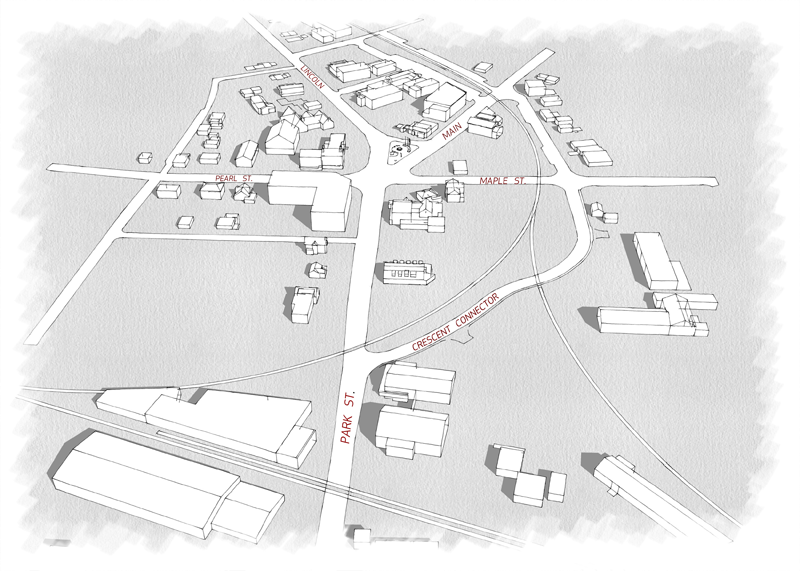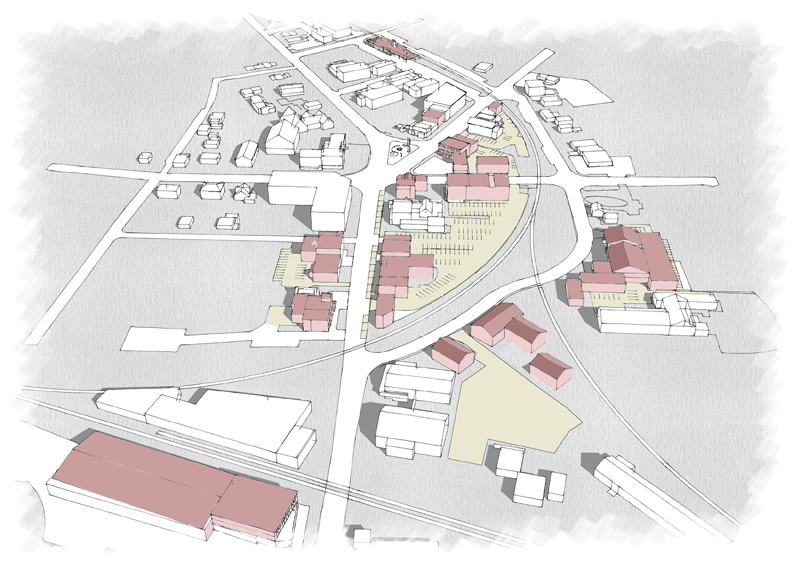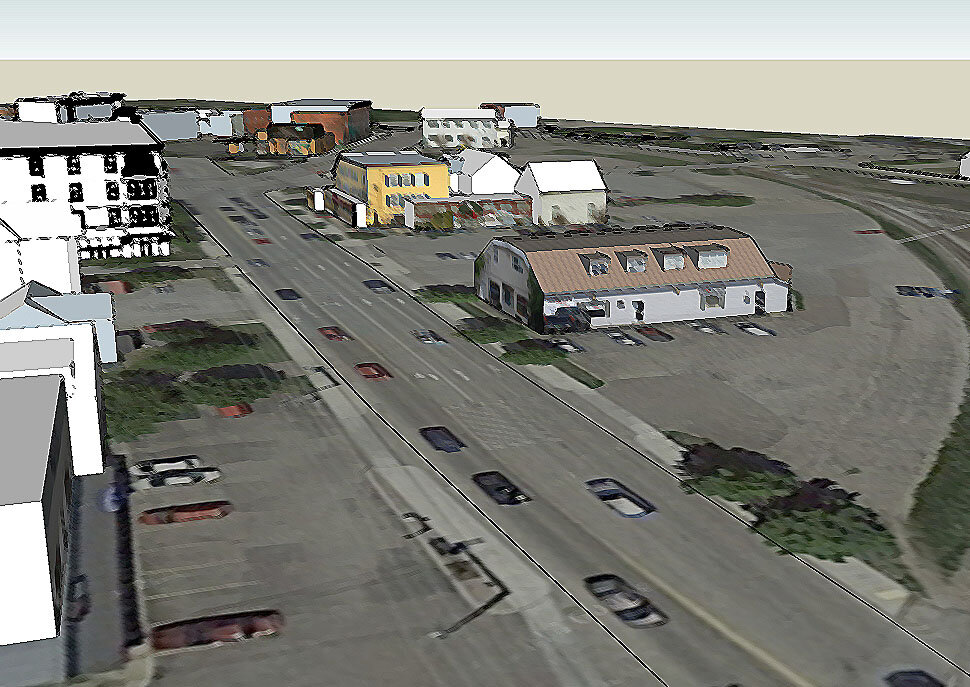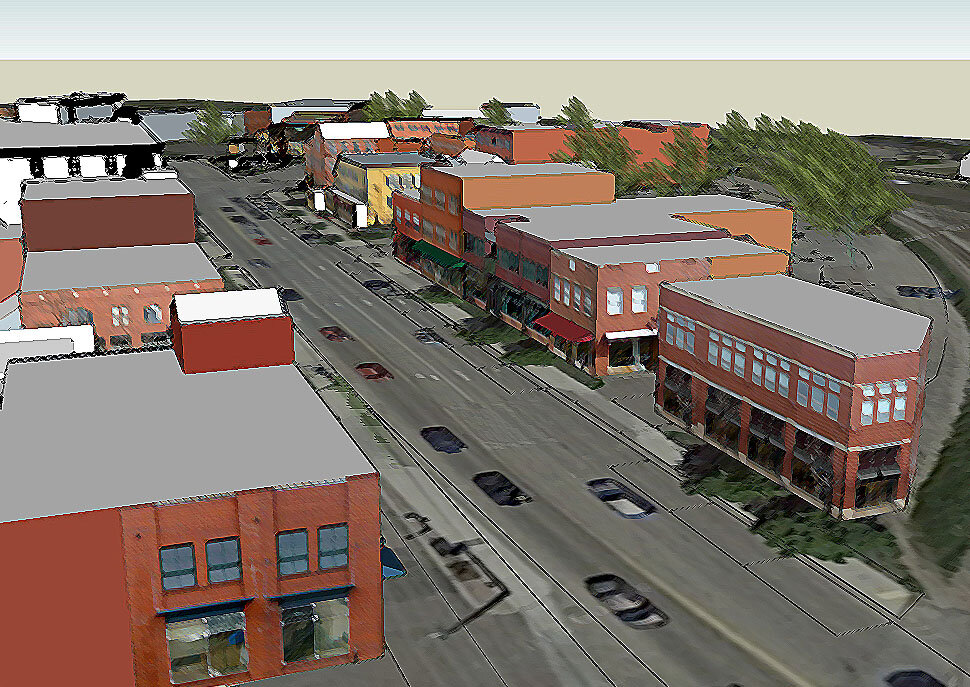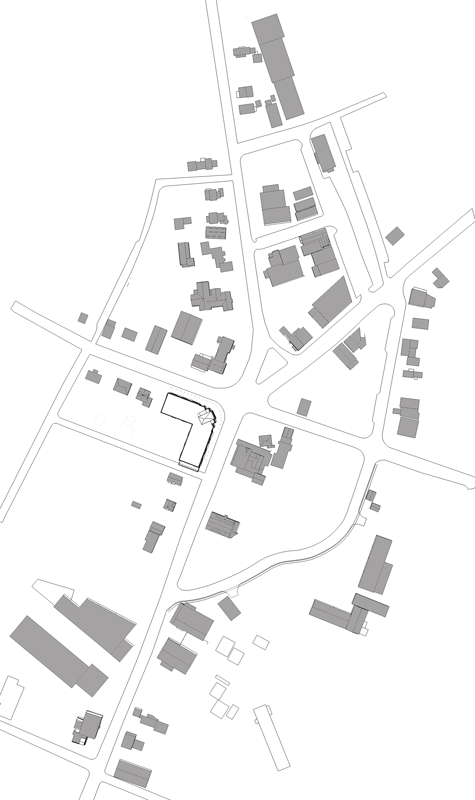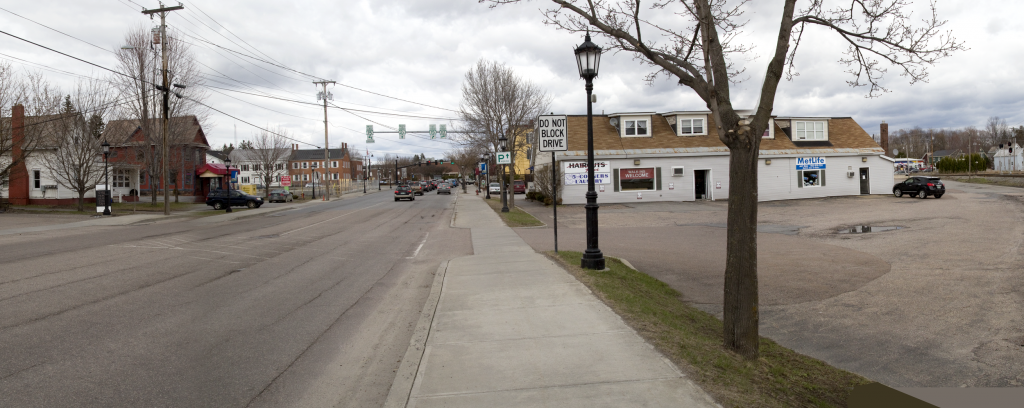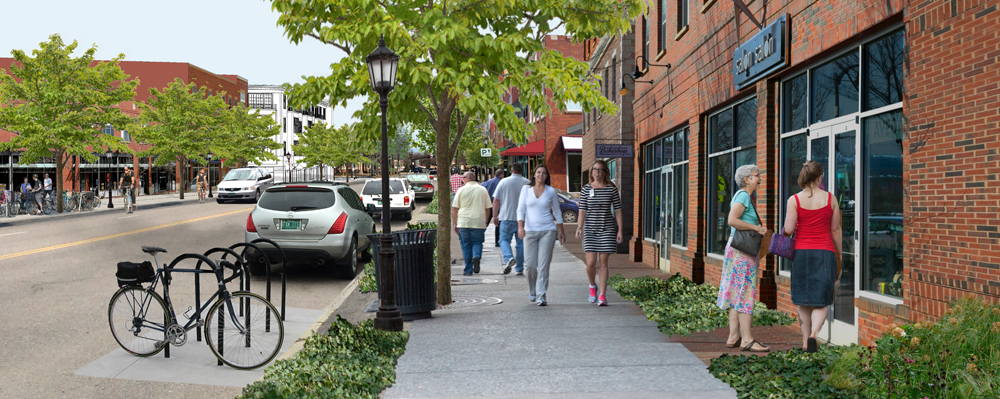By Robin Pierce
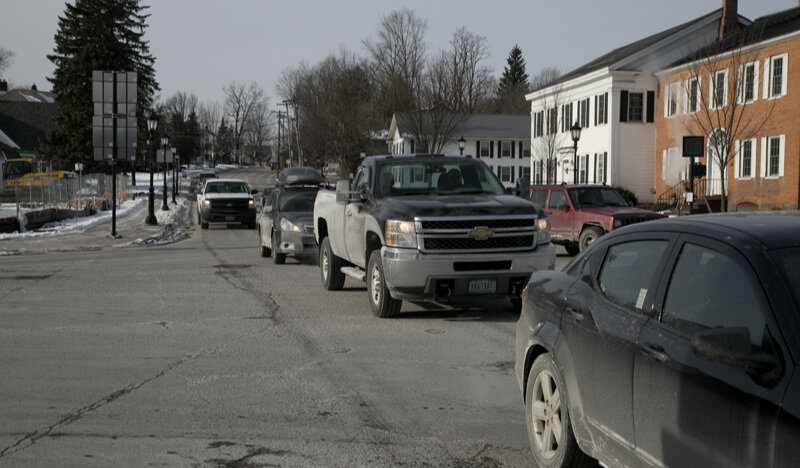
“The Five Corners? Why would I want to go through the Five Corners?!”
“Five roads, 3 minutes if I get through the first traffic light. Seven minutes if it’s the second. My coffee’s cold before I get through the Five Corners!”
“When I go down the side streets to avoid the intersection kids on their bikes slow me down. We need a roundabout!”
“Everyone avoids the Five Corners!”
These are common refrains from people who pass through the heart of our town.
Many of the suggested remedies, like a roundabout or a bypass, focus purely on managing traffic. But they would do nothing to make the Five Corners, which is at the center of Essex Junction Village, a more welcoming place. We want a village that is vibrant and verdant, and that accommodates vehicles. We can’t keep out cars and trucks, but we can balance drivers’ needs with everyone else’s.
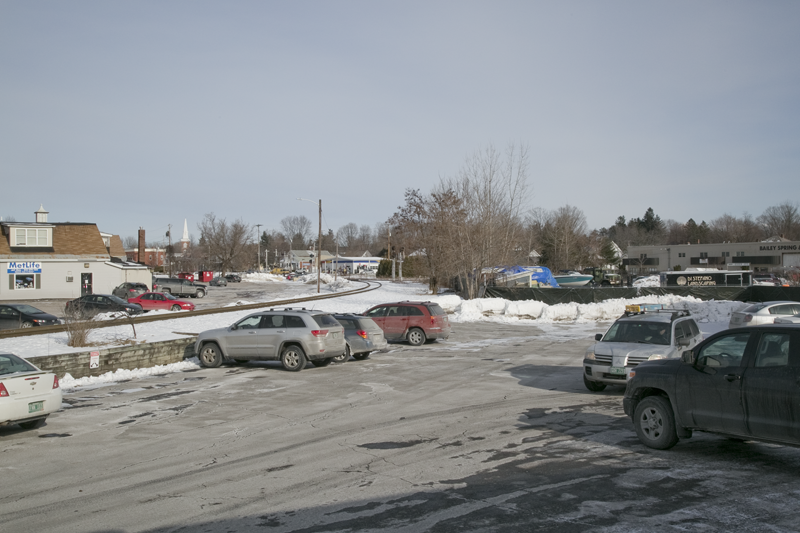
Essex Junction is named, not for the notorious intersection of commuter roads, but for a railroad junction. A block from the Five Corners, an Amtrak mainline connecting St. Albans to Washington, DC, intersects with a secondary line to Burlington. While these railroads present challenges—they create barriers to movement through the downtown and are owned by faraway multinational corporations who control major swaths of our downtown—they also offer opportunities. Chittenden County’s only passenger rail stop brings people into the village every day, and that mainline could one day be used for commuter rail. Also, the rail-related activity of a century ago bequeathed us acres of underused land in our downtown.
So, how to solve a problem like Five Corners? Several years ago Essex Junction Trustees and staff came up with a simple and elegant solution that uses existing streets in a different way. The plan had two steps. First, create a new street that diverts traffic around the corners, then close one leg to create a four-way intersection. It was a “traffic solution” that would also help build a more pedestrian and business-friendly downtown.
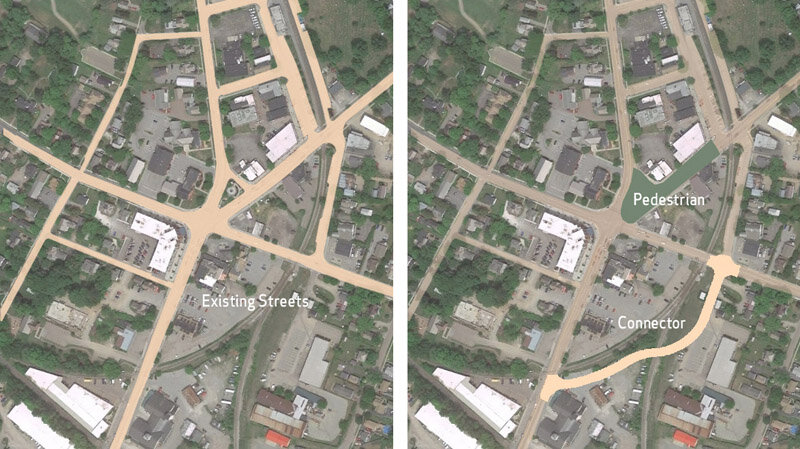
Working from the ground up, Village staff and Trustees (elected officials) hired Terra Firma Urban Design to help Essex Junction residents translate their long-stated goal of “thoughtful growth” into a vision of a more vibrant downtown.
Public outreach combined with a design workshop informed a series of images showing how infill development and streetscape improvements over time could transform Five Corners into a more lively place.
“Before” and “after” images (see above) demonstrated how much more appealing downtown streets could be with calmer traffic and a pedestrianized Main Street. The point was to help residents see how Five Corners might look with greater density, fewer cars, more pedestrians and better green space.
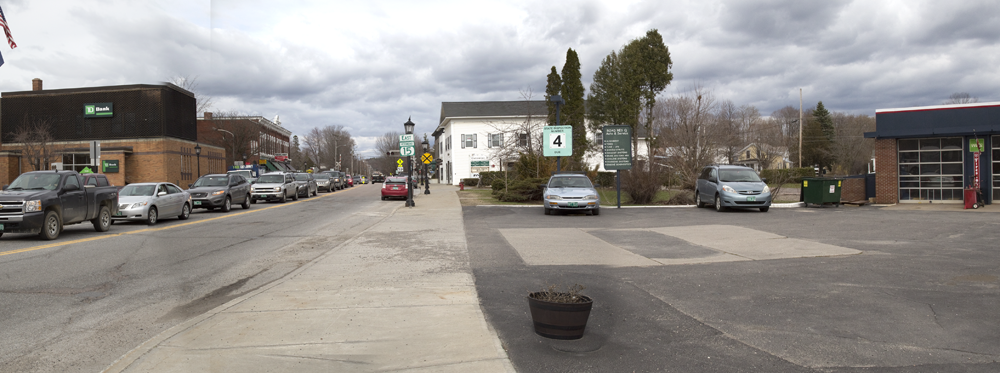
Main Street in 2015 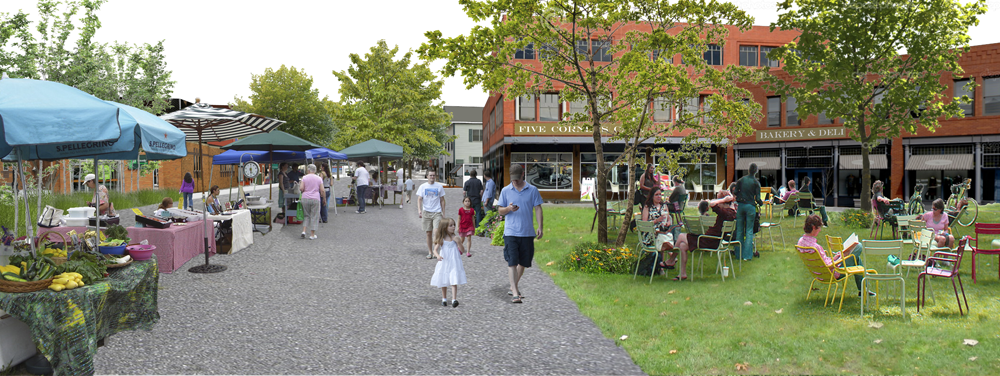
A pedestrianized Main Street and new village green. Photo simulation by Julie Campoli
Our next step was to test the concept with a more thorough analysis. For decades, Essex Junction residents had been told that a bypass—the Circumferential Highway— would remove congestion from Five Corners. When the state abandoned the Circ project for environmental reasons, Essex Junction became eligible for transportation funding to find a better solution. Together with Chittenden County Regional Planning Commission staff, we hired the consulting firm, RSG, to do the analysis. The results showed that —a new road through the underutilized industrial zone—would improve traffic in the Village Center more efficiently at a fraction of the cost of the Circ.
Phase I of the plan involves building a new street (the Connector) from Park Street across the Amtrak rail line and connecting to Main Street. This road opens up over six acres of under used land in our Designated Village Growth Center to economic development. And the Connector offers a workaround to an existing problem—stalled traffic as the McNeil Plant wood chip train passes though the Five Corners—by enabling vehicles to continue moving.
Phase II involves closing a short section of Main Street to motor vehicles. This would make the current five-leg intersection, with all its complicated traffic movements, into a simpler four-way intersection.
The change would bring many benefits. It would cut the current six-light traffic signal sequence to two, reducing the wait time from 3 1/2 minutes to 35 seconds. Shorter idling times would diminish exhaust fumes, and improve air quality in our downtown. Reduced wait times would lessen the need for drivers to cut through residential neighborhoods in an attempt to avoid the intersection.
The Trustee-endorsed proposal to study pedestrianizing Main Street is based upon a preliminary engineering analysis that showed wait times and traffic congestion throughout the village center could be dramatically reduced by routing Main Street traffic onto the Crescent Connector and converting Five Corners to a standard four-way intersection.
Phase II will also create the opportunity to build something Essex Junction is lacking— a village green. A south-facing green would become a fulcrum that connects the web of sidewalks radiating through the Village. A four-way intersection would be narrower. Shorter crossing distances, would make pedestrians and bicyclists feel safer. Carving out more space for people from existing roadways, adding more trees and grass would create the type of space that’s perfect for community events.
The multinational companies that control the rail rights-of-way could have stymied the plan, but they see the benefits. The majority of traffic moving through the Village now crosses railroad tracks twice. After Phase 2 is implemented, most would only cross once, reducing the potential for accidents. The new traffic signal sequence would reduce wait time by triggering only the needed red lights, rather then all Village lights, as is now the case.
The best thing about the connector plan is that it puts the village back in Essex Junction Village. It offers a holistic approach to the problem of traffic—putting people first while accommodating the need to move cars. And it bolsters economic development because businesses want to be where people are. Transportation problems often require land use solutions, with an assist from urban design and landscape architecture. It takes more time, but good things come to those who wait.
Robin Pierce is the Community Development Director of Essex Junction. With a background in both planning and landscape architecture, he brings creative problem-solving and broad experience in project assessment and management to his job. Recently his expertise has focused on bringing undervalued and abandoned properties into productive use. This article originally appeared here.




